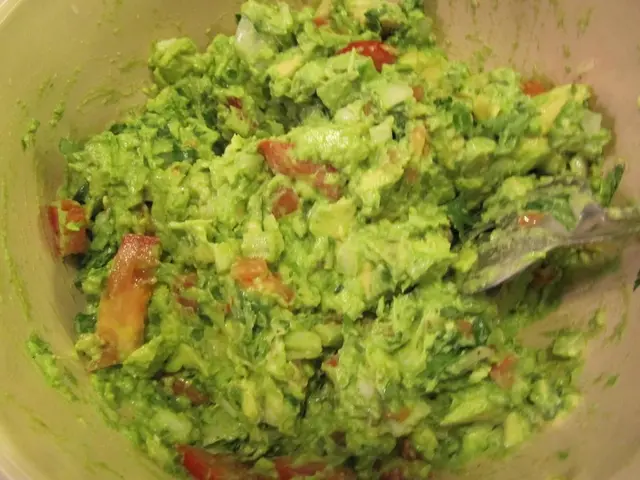Addressing Joint Pain Relief Through Nutrition: A Comprehensive Guide
Caring for Your Joints: A Guide to Diet and Nutrition
Joint pain, a common ailment, can occur when the body's joints experience discomfort or inflammation. These vital hinges enable our bodies to move smoothly, much like the hinges on a door. Activities such as sports, rapid growth, and certain illnesses are common causes. Understanding the origins of joint pain is crucial for maintaining the health of our bodies.
The significance of diet in joint health is substantial. Just as our bodies require the right fuel to function optimally, our joints rely on proper nutrition for strength and flexibility. Consider diet as a specialized recipe, with specific ingredients enhancing joint health. A balanced diet rich in fruits, vegetables, and calcium- and vitamin D-fortified foods can help maintain healthy joints.
Vitamin D, Calcium, and Omega-3 Fatty Acids: Joint Health Superheroes
When it comes to joint support, some foods are particularly noteworthy. Among them are vitamin D, calcium, and omega-3 fatty acids.
- Vitamin D, often called the sunlight vitamin, plays a crucial role in calcium absorption. This essential nutrient can be found in fatty fish, fortified dairy products, and certain mushrooms exposed to ultraviolet light.
- Calcium, a key component of bones and teeth, is abundant in dairy products, leafy greens, seaweed, and calcium-fortified foods.
- Omega-3 fatty acids, found in fish, nuts, and seeds, are anti-inflammatory compounds that soothe joint discomfort. They are especially prevalent in fatty fish like salmon, sardines, herring, and mackerel.
A Joint-Friendly Diet Plan
Incorporating joint-supportive foods into your daily diet can be an enjoyable endeavor, akin to assembling a delicious and nutritious puzzle. Here are some suggestions:
- Start your day with a calcium-rich breakfast, such as yogurt with berries.
- For lunch, opt for a salmon salad with leafy greens and nuts for an Omega-3 boost.
- Snack on carrot sticks and hummus, a quick and convenient way to get essential vitamins and minerals.
- Prepare a veggie stir-fry with tofu for dinner, adding calcium to your meal while keeping things light and flavorful.
Staying Hydrated: The Unsung Hero of Joint Health
Water, the unsung hero of joint health, is crucial for lubricating the joints and facilitating smooth movement. Adequate water intake can help reduce muscle spasms and stiffness, potentially contributing to increased mobility.
While some foods can be beneficial for joint health, others can be detrimental. To maintain optimal joint health, limit consumption of processed foods, sugary drinks, and excessive red meat. Adhering to these guidelines can help keep your joints feeling comfortable and strong.
Source:[1] National Institutes of Health - National Library of Medicine (NIH-NLM). (n.d.). Calcium. MedlinePlus. Retrieved April 17, 2023, from https://medlineplus.gov/ency/article/002422.htm[2] National Institutes of Health - National Library of Medicine (NIH-NLM). (n.d.). Omega-3 fatty acids. MedlinePlus. Retrieved April 17, 2023, from https://medlineplus.gov/druginfo/natural/570.html[3] National Institutes of Health - Office of Dietary Supplements (ODS). (n.d.). Vitamin D. Dietary Supplement Fact Sheet. Retrieved April 17, 2023, from https://ods.od.nih.gov/factsheets/VitaminD-Consumer/[4] United States Department of Agriculture - Agricultural Research Service (USDA-ARS). (n.d.). Essential guide to nutrient-rich foods. United States Department of Agriculture. Retrieved April 17, 2023, from https://www.ars.usda.gov/ARSUserFiles/80400550/pdf/Eating_for_Health_An_Essential_Guide_to_Nutrient-Rich_Food_and_Dietary_Practices.pdf[5] University of California, Berkeley. (n.d.). The health benefits of calcium. UC Berkeley Wellness. Retrieved April 17, 2023, from https://wellness.berkeley.edu/mind-body/nutrition/the-health-benefits-of-calcium/
- The balanced diet enriched with fruits, vegetables, calcium- and vitamin D-fortified foods, as well as omega-3 fatty acids, is vital for maintaining the health of joints, comparable to the smooth movement enabled by hinges on a door.
- In the realm of joint support, vitamin D, calcium, and omega-3 fatty acids are seen as superheroes, with vitamin D aiding in calcium absorption and being found in fatty fish, fortified dairy products, and certain mushrooms.
- Calcium, a key component of bones and teeth, can be found in an array of foods like dairy products, leafy greens, seaweed, and calcium-fortified foods, while omega-3 fatty acids, found in fish, nuts, and seeds, are anti-inflammatory compounds that soothe joint discomfort.
- Maintaining a joint-friendly diet can be an enjoyable experience, like assembling a delicious and nutritious puzzle; consider starting your day with calcium-rich yogurt, enjoying a salmon salad with leafy greens and nuts for lunch, snacking on carrot sticks and hummus, and preparing a veggie stir-fry with tofu for dinner.
- In addition to beneficial foods, limiting the consumption of processed foods, sugary drinks, and excessive red meat can contribute to optimal joint health, ensuring comfort and strength in joints.








